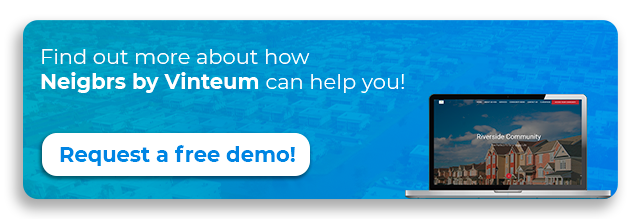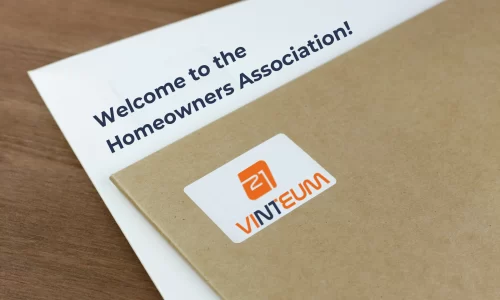Effective communication is essential for successful HOA management. Whether you’re a board member or a community association manager, having a clear HOA communication plan is crucial. Let’s explore the benefits of it and essential tips to create one.
What is an HOA communication plan?
An HOA communication plan is a structured approach to ensure consistent and transparent communication among community stakeholders. It outlines how board members and managers will share information, address issues, and foster engagement within the community.
What are the benefits of having an HOA communication plan?
Time Saving: Clear procedures save time by providing structured guidelines for communication and decision-making. For example, having a designated process for submitting maintenance requests ensures that requests are handled promptly. This reduces delays and prevents potential issues from escalating.
Improved Transparency: Enhanced transparency ensures all stakeholders have access to relevant information. For instance, publishing meeting minutes and financial reports on a HOA portal allows residents to stay informed about HOA decisions and financial matters.
Effective Information Sharing: An HOA communication plan ensures that crucial updates, announcements, and community decisions are consistently communicated to residents. For example, sending out monthly newsletters or email updates keeps residents informed about upcoming events, policy changes, and community initiatives.
Clarity and Guidance: By outlining specific protocols and procedures, an HOA communication plan provides board members and managers with clarity on their roles and responsibilities.
Responsibility and Accountability: Clear communication processes promote accountability among stakeholders for their actions and decisions. For example, having a formal process for addressing resident complaints ensures that issues are addressed promptly and fairly.
What should your HOA communication plan include?
Communication Objectives: Clearly define the objectives of the communication plan, outlining what the HOA aims to achieve through effective communication.
Target Audience: Identify the primary stakeholders within the community, including residents, board members, property managers, vendors, and other relevant parties.
Communication Channels: Specify the various communication channels that will be used to share information, such as email, newsletters, community websites, social media platforms, bulletin boards, and community meetings.
Communication Protocols: Establish clear protocols for communication, including guidelines for the frequency and timing of communications, as well as procedures for addressing emergencies, urgent matters, and routine updates.
Content Guidelines: Define the types of information that will be communicated to residents, such as community news, event announcements, policy updates, maintenance schedules, and financial reports.
Feedback: Provide residents with avenues for providing feedback, suggestions, and concerns, such as suggestion boxes, community forums, online surveys, or designated email addresses.
Responsibilities and Roles: Clearly outline the roles and responsibilities of board members, managers, and other stakeholders involved in the communication process. You should also include who is responsible for creating content, managing communication channels, and responding to inquiries.
Timelines and Deadlines: Establish timelines and deadlines for communication activities, ensuring that information is communicated in a timely manner.
Accessibility and Inclusivity: Ensure that communication channels and materials are accessible to all residents, including those with disabilities, language or age barriers, by providing alternative formats and language options as needed.
By including these essential components in your plan, you will have the perfect overview of your HOA communication strategy.
3 essential tips for a great HOA communication plan
Establish your communication channels
Determine the most effective HOA communication tools for reaching your community members. It can be email, newsletters, social media platforms, community websites, or bulletin boards. Tailor your channel selection to suit the preferences and habits of your residents, ensuring that important information reaches them in a timely and accessible manner.
Form a communication committee
Consider forming a dedicated communication committee composed of board members, volunteers, or residents with a passion for effective communication. This committee can help brainstorm ideas, create content, manage communication channels, and gather feedback from residents. They will ensure that your communication plan remains dynamic and responsive to community needs.
Regular updates
Keep your HOA communication plan dynamic by updating it regularly to reflect changes in technology, community demographics, or communication preferences. Schedule periodic reviews to assess the effectiveness of your communication efforts and make adjustments as needed to ensure continued engagement and transparency within the community.
Wrapping up on HOA communication plan
An HOA communication plan is a fundamental tool for effective community management. By implementing clear communication protocols, HOAs can create thriving communities where residents feel informed and valued. Embrace these principles to enhance your HOA’s communication strategy and overall effectiveness.







